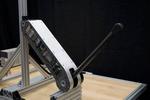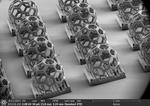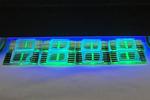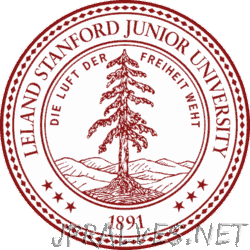Other

“Researchers developed new methods that produce intense attosecond pulses and pulse pairs to gain insights into the fastest motions inside atoms and molecules. It could lead to advancements in fields ranging from chemistry to materials science. A team of scientists …

“Researchers at Stanford have designed a spring-assisted actuator – a device that can accomplish dynamic tasks using a fraction of the energy previously required. Whether it’s a powered prosthesis to assist a person who has lost a limb or an …

“A new process for microscale 3D printing creates particles of nearly any shape for applications in medicine, manufacturing, research and more – at the pace of up to 1 million particles a day. 3D-printed microscopic particles, so small that to the …

“This surprising result is important for understanding unconventional superconductors and other materials where electrons band together to act collectively. Long before researchers discovered the electron and its role in generating electrical current, they knew about electricity and were exploring its …

“Defects can make a material stronger or make it fail catastrophically. Knowing how fast they travel can help researchers understand things like earthquake ruptures, structural failures and precision manufacturing. Settling a half century of debate, researchers have discovered that tiny …
News ‘Computer vision’ reveals unprecedented physical and chemical details of how a lithium-ion battery works

“It lets researchers extract pixel-by-pixel information from nanoscale X-ray movies of electrode particles absorbing and releasing lithium ions. Billions of tiny particles packed into rechargeable lithium-ion battery electrodes are responsible for storing charge and making it available when it’s …

“X-ray laser studies help researchers identify early steps in the freezing process to better understand how clouds make ice and their effect on climate. Clouds are a lot cooler than you might think. In fact, scientists might say they’re …

“By tinkering with the material makeup of perovskite LEDs, a cheaper and more easily-made type of LED, Stanford researchers achieved leaps in brightness and efficiency – but saw their lights give out after a few minutes of use. Chances are, the …
News Researchers show how to increase X-ray laser brightness and power using a crystal cavity and diamond mirrors

“The long – but not too long – cavity would ping-pong X-ray pulses inside of a particle accelerator facility to help capture nature’s fastest movements. At particle accelerator facilities around the world, scientists rely on powerful X-rays to reveal the structure …

“A low-cost, recyclable powder can kill thousands of waterborne bacteria per second when exposed to sunlight. Stanford and SLAC scientists say the ultrafast disinfectant could be a revolutionary advance for 2 billion people worldwide without access to safe drinking water …

